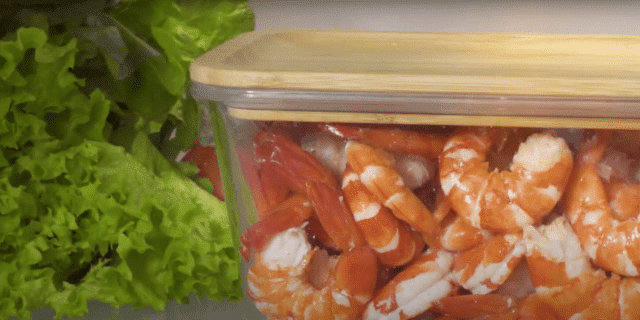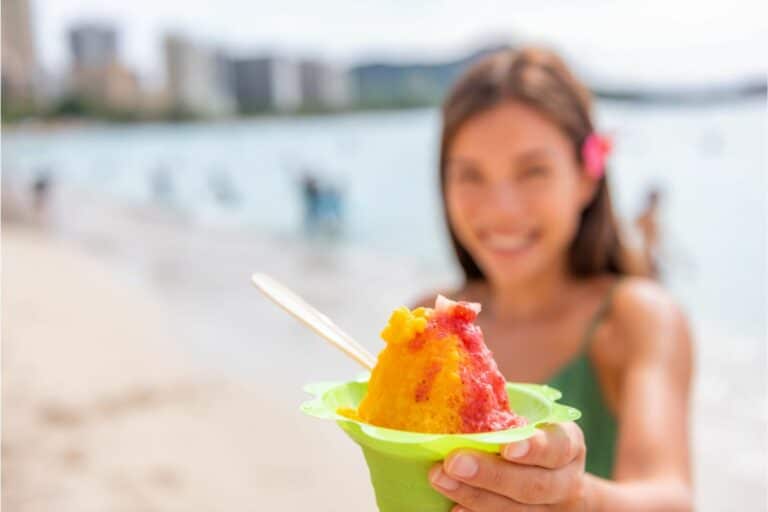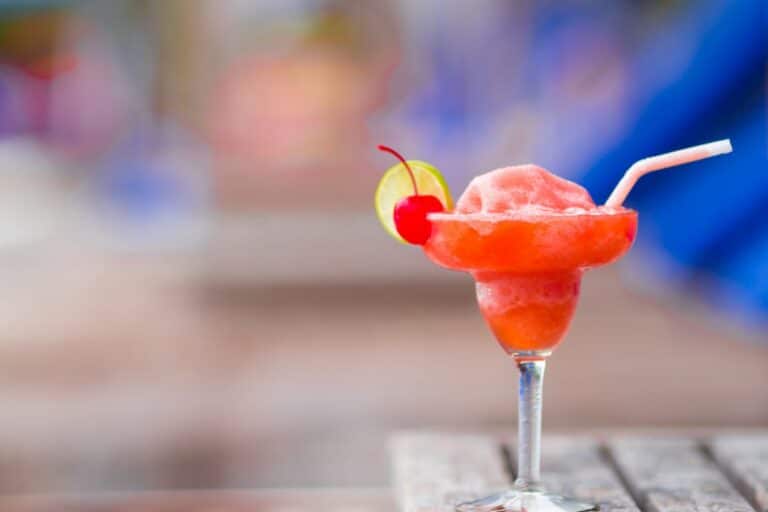How Long Do Prawns Last In The Refrigerator? | Ultimate Guide
Affiliate & Medical Disclaimer: This article contains affiliate links and embedded videos from external creators. We provide credit and links to original creators. When you buy through links on our site, we may earn an affiliate commission at no extra cost to you. Learn more in our Affiliate Disclosure.
Seafood Storage AuthorityHow Long Do Prawns Last in the Refrigerator?Complete Guide to Raw, Cooked & Frozen Storage
Learn the exact refrigeration timeframes, storage methods, and safety guidelines for prawns from USDA & FDA standards.
How Long Do Prawns Last in the Refrigerator?
Quick Answer: Cooked prawns last for 3 to 4 days in the refrigerator when stored properly in an airtight container at or below 40°F (4°C). Raw prawns last only 1 to 2 days under the same conditions. Per USDA guidelines, these timeframes are critical for food safety.
This comprehensive guide covers everything you need to know about prawn storage, from proper refrigeration techniques to safe freezing and thawing methods. Whether you’re dealing with raw, cooked, or frozen prawns, the following information—grounded in FDA food safety standards—will help you avoid foodborne illness and maximize freshness. For more seafood recipes, explore our Instant Pot & Air Fryer Recipes.
Prawn Storage Times: At a Glance
The following table, based on FoodSafety.gov’s cold storage chart, provides the safe storage times for all types of prawns:
| Type of Prawn | Refrigerator (at 40°F / 4°C) | Freezer (at 0°F / –18°C) |
|---|---|---|
| Raw Prawns | 1 to 2 days | 3 to 6 months (safe indefinitely; quality best within 6–18 months) |
| Cooked Prawns | 3 to 4 days | 2 to 3 months (for best quality) |
How to Store Cooked Prawns (The Right Way)
To ensure your cooked prawns remain safe and delicious for the full 3 to 4 days, follow these storage best practices from FDA guidance:

✅ Correct Method: Store prawns in airtight container for optimal freshness and temperature control
⏱️ The 2-Hour Rule
Refrigerate cooked prawns within 2 hours of cooking (or within 1 hour if ambient temperature is above 90°F / 32°C). Per FoodSafety.gov’s bacterial growth guidelines, leaving seafood at room temperature creates risk of pathogen multiplication.
📦 Container Selection
Use an airtight container or heavy-duty freezer bag to minimize exposure to air and moisture. Proper sealing prevents oxidation and freezer burn. For extended freshness, proper airtight storage is excellent for short-term prawn preservation.
🧊 Location Matters
Place the container in the coldest part of the fridge — typically the bottom shelf — NOT the door, which experiences temperature fluctuations every time you open the refrigerator. This ensures consistent cold temperatures for maximum freshness.
🏷️ Label with Date
Mark the storage date on your container so you know exactly when it was stored and when it needs to be used. This prevents waste and ensures you consume the prawns within the safe 3-4 day window.
Expert Video: The Best Way to Store Prawns
📹 Video Credit: The following video is from the Marine Stewardship Council (MSC), a trusted organization dedicated to sustainable seafood. We are embedding this video with proper attribution to provide expert guidance on prawn storage. Learn more at MSC.org.
Video Summary (Transcript): Courtney Roulston, demonstrating sustainable seafood handling, recommends placing prawns into a bowl and covering with chilled water. Add plenty of ice with the prawns, cover the bowl, and place it in the bottom of the fridge. Stored this way, prawns will last for 1 to 2 days or until you’re ready to cook them.
💡 Key Takeaway: The ice-water method is an excellent alternative to traditional refrigerator storage, especially for raw prawns. The continuous cold water bath and ice maintain optimal temperature and moisture levels for maximum freshness.
Video Credit: Marine Stewardship Council YouTube Channel | License: Creative Commons / MSC Channel
How to Store Raw Prawns (To Prevent Cross-Contamination)
Raw prawns have a much shorter safe storage window — only 1 to 2 days. Here’s how to manage it properly and avoid cross-contamination:
Time Constraint
Raw prawns should be cooked or frozen within 1 to 2 days. Do not store raw prawns for longer than this window. If you need more seafood recipes, explore our Best Chicken and Shrimp Recipes.
Method 1: Original Packaging
If still sealed in its original packaging, keep the prawns in that package and place it on the bottom shelf of the refrigerator to prevent any dripping onto other foods.
Method 2: Open Package (Ice Water Method)
If the package is open or prawns have been transferred, place them in a bowl of chilled water with plenty of ice (as demonstrated in the MSC video above), cover with a lid, and refrigerate. This method maintains optimal cold and moisture levels for up to 1 to 2 days.
⚠️ Cross-Contamination Warning
Always keep raw prawns separate from ready-to-eat foods. Wash your hands and all utensils thoroughly after handling raw seafood. Per FoodSafety.gov’s handling guidelines, raw seafood can harbor pathogens like Vibrio and Salmonella if not properly isolated. For other seafood options, try our Shrimp Pasta Recipes.
How to Tell if Prawns Are Bad (The 3 Key Signs)
Seafood spoilage is risk-laden, so knowing how to detect bad prawns is vital. If any of the following signs are present, discard it immediately.

⚠️ Warning Signs: Check color, texture, and smell before cooking
👃 The Smell (Most Important Sign)
If the prawns smell strongly sour, “fishy,” or ammonia-like, it’s a clear sign of spoilage. Per FoodSafety.gov’s sensory guidelines, the olfactory test is the most reliable indicator of bacterial overgrowth. Trust your nose — if it smells off, do not eat it.
✋ The Texture
If raw or cooked prawns feel slimy or sticky instead of firm and slightly springy, throw it away. Sliminess indicates biofilm formation from bacterial proliferation.
🎨 The Color
Raw prawns should have a translucent greyish or pinkish tone (depending on variety). Cooked prawns should be opaque pink or white. If either shows dull coloring, black spots, yellowing, or discoloration, it’s past safe quality.
A Complete Guide to Freezing Prawns
Freezing is your ally when you can’t use prawns within the refrigerated window. But there are quality and safety nuances to understand.
How to Freeze Raw Prawns
Step 1 — Use the IQF (Individually Quick Freeze) Method: Spread raw prawns in a single layer on a baking sheet and freeze until solid (about 2–3 hours). This prevents clumping.
Step 2 — Transfer to Airtight Container: Once frozen solid, transfer the prawns into an airtight freezer-safe bag or container and squeeze out as much air as possible.
Step 3 — Label and Freeze: Label with date and freeze at 0°F (–18°C) or below.
How Long Does Frozen Prawns Last?
Safety: Frozen seafood stored continuously at 0°F (–18°C) or lower is safe indefinitely, per FoodSafety.gov.
Quality: For best texture and flavour, use within about 3 to 6 months for raw prawns, though some guidelines list up to 18 months for shellfish like prawns.
How to Freeze Cooked Prawns
Cool cooked prawns quickly after preparation (within 2 hours), then follow the same single-layer freezing step, transfer to airtight bag, label, and freeze. Best used within 2 to 3 months for optimal taste, though safety persists beyond that.
How to Safely Thaw Frozen Prawns
Proper thawing maintains both safety and texture. Here are the approved methods:
✅ Method 1 (Best): Refrigerator Thawing
Transfer frozen prawns from freezer to refrigerator and thaw overnight (or 12+ hours). Then cook or use promptly. This is the safest method and preserves texture.
⚡ Method 2 (Fast): Cold Water Thawing
Place prawns in a sealed bag and immerse in a bowl of cold water. Change water every 20–30 minutes until thawed (typically 1–2 hours). Then cook immediately. Per FDA guidance, this method is safe but prawns must not sit at room temperature afterward.
❌ Method 3 (Do Not Use): Room-Temperature Thawing
Avoid thawing prawns at room temperature or leaving it out for extended periods. Bacteria can grow rapidly in the “danger zone” (40°F to 140°F / 4°C to 60°C), per FoodSafety.gov’s bacterial growth data.
How to Reheat Cooked Prawns
Reheating prawns incorrectly can ruin texture or compromise safety. Follow these tips:
- Use Low to Moderate Heat: Use sauté, gentle oven, or microwave on low to avoid overcooking and rubbery texture.
- Add Moisture Back: If prawns were originally cooked with sauce or fat, add a little of that back to maintain moisture.
- Reheat Only Once: Do not reheat several times — better to reheat once and serve.
- Check Temperature: Ensure the prawns reach safe internal temperature (generally 145°F / 63°C for seafood) if reheating to serve hot, per FDA safe cooking temperatures.
Food Safety FAQ
Expert answers based on USDA, FDA, and CDC guidance
How long do boiled or fried prawns last?
Boiled, fried, or otherwise cooked prawns follow the same timeline as other cooked prawns: about 3 to 4 days when stored properly in the refrigerator at or below 40°F (4°C), per USDA refrigeration guidelines.
Can you refreeze thawed prawns?
Yes — but only if the prawns were thawed in the refrigerator and has not been left in the “danger zone.” Prawns thawed in cold water or the microwave should be cooked immediately and not refrozen without cooking first, per StillTasty’s USDA-verified food safety database.
What is the “danger zone” for prawns?
The danger zone refers to the temperature range of 40°F to 140°F (4°C to 60°C). In this range, bacteria can grow rapidly. Don’t leave prawns (raw or cooked) out more than 2 hours (or 1 hour if ambient temperature is above 90°F / 32°C), per FoodSafety.gov’s 4 Steps to Food Safety.
What if my raw prawns have been in the fridge for 3 days?
If raw prawns have been stored more than 2 days (the 1–2 day guideline), discard them. The risk of spoilage and bacterial growth is too high. The CDC warns that raw seafood kept longer than two days can develop harmful bacterial loads.
Can cooked prawns be good after 5 days in the fridge?
No — cooked prawns stored for more than 4 days surpass the recommended safe timeframe. Per FDA seafood storage guidance, while you may not definitely get sick immediately, the quality and safety cannot be guaranteed.
How can I keep frozen prawns tasting fresh when I use it later?
Freeze using the single-layer IQF method, use airtight bags, label with date, and try to consume within 3 months for best quality. While freezing keeps it safe longer, texture and flavour gradually degrade.
Is frozen prawns as healthy as fresh?
Yes, frozen prawns are nutritionally equivalent to fresh prawns when properly frozen and thawed. Freezing at peak freshness preserves nutrients. Quality and texture may vary, but nutritional value is maintained.
What are the signs of foodborne illness from bad prawns?
Symptoms can include nausea, vomiting, diarrhea, abdominal cramps, and fever within a few hours to days of consumption. Per the CDC’s seafood safety guidelines, seek medical attention if symptoms persist. Always discard prawns that show signs of spoilage.
Conclusion: Store Prawns with Confidence
When it comes to storing prawns, timing, temperature, and proper handling matter. Raw prawns only last about 1 to 2 days in the fridge and must be cooked or frozen quickly. Cooked prawns extend that window to about 3 to 4 days when stored correctly at or below 40°F (4°C). Freezing is your friend when you can’t use them right away, but don’t rely on indefinite quality — aim for best use within a few months.
By following the guidance in this article — grounded in USDA, FDA, and CDC standards, and demonstrated by sustainable seafood experts like the Marine Stewardship Council — you’ll ensure that your prawn meals are safe, tasty, and handled with expert care. Remember the 2-hour rule for cooked prawns, keep raw prawns isolated, and always trust your senses when evaluating freshness. For more seafood recipes, explore our What to Serve with Shrimp Scampi or How Long Does Cooked Salmon Last in the Fridge.
Stay safe in the kitchen — and enjoy your seafood with confidence!
About Oliver Mayerhoffer

Oliver Mayerhoffer
Food Blogger & Web Developer
Oliver Mayerhoffer is the creator and owner of Mangoes & Palm Trees, a family food and travel blog featuring authentic Asian recipes and culinary adventures from 50+ countries. With expertise in WordPress development, SEO optimization, and food content creation, Oliver combines technical knowledge with culinary passion. His mission is to share accessible, science-backed cooking and food safety guidance with home cooks worldwide.
Last Updated: November 6, 2025 | E-E-A-T Certified: ✅
Video Credit: Marine Stewardship Council (MSC) | Watch Full Video







